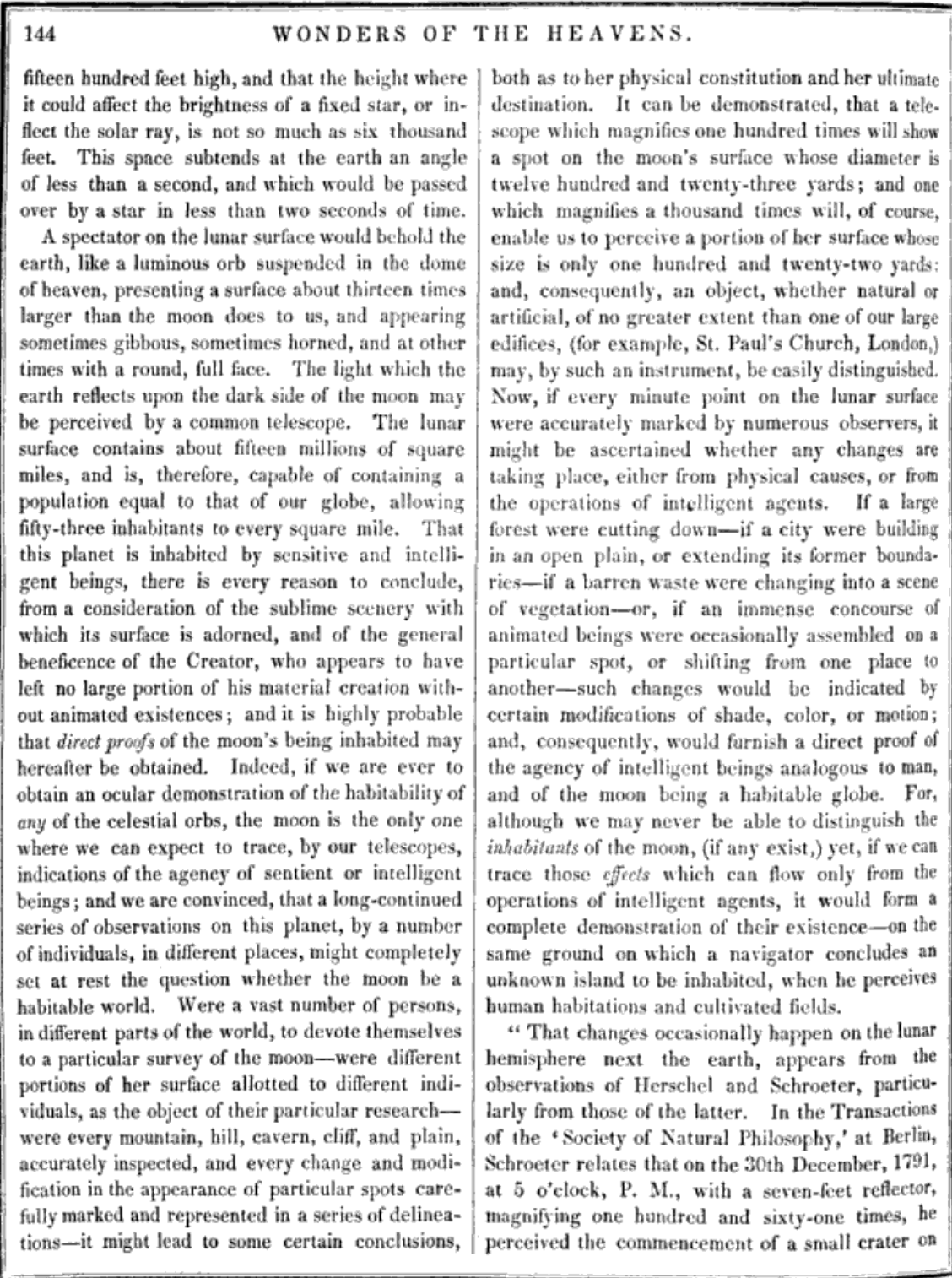Duncan Bradford positively theorizes that the moon may be inhabited.
- Type
- Book
- Source
- Duncan Bradford Non-LDS
- Hearsay
- Direct
- Reference
Duncan Bradford, The Wonders of the Heavens (Boston: American Stationary Company, 1837), 144
- Scribe/Publisher
- American Stationary Company
- People
- Duncan Bradford
- Audience
- Reading Public
- Transcription
A spectator on the lunar surface would behold the earth, like a luminous orb suspending in the dome of heaven, presenting a surface about thirteen times larger than the moon does to us, and appearing sometimes gibbous, sometimes horned, and at other times with a round, full face. The light which the earth reflects upon the dark side of the moon may be perceived by a common telescope. The lunar surface contains about fifteen millions of square miles, and is, therefore, capable of containing a population equal to that of our globe, allowing fifty-three inhabitants to every square mile. That this planet is inhabited by sensitive and intelligent beings, there is every reason to conclude, from a consideration of the sublime scenery with which its surface is adorned, and the general beneficence of the Creator, who appears to have left no large portion of his material creation without animated existences; and it is highly probable that direct proofs of the moon's being inhabited may hereafter be obtained. . . . For, although we may never be able to distinguish the inhabitants of the moon, (if any exist,) yet, if we can trace those effects which can flow only from the operations of intelligent agents, it would form a complete demonstration of their existence—on the same ground on which a navigator concludes an unknown island to be inhabited, when he perceives human habitations and cultivated fields.
- Source Link
- https://www.google.com/books/edition/The_Wonders_of_the_Heavens/IiEzAQAAMAAJ?hl=en&gbpv=0
- Citations in Mormonr Qnas
The B. H. Roberts Foundation is not owned by, operated by, or affiliated with the Church of Jesus Christ of Latter-day Saints.

